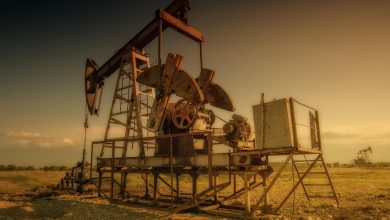What is Ocean Acidification?

Ocean acidification refers to the process by which the Earth’s oceans become more acidic over time. A measurement known as pH measures how acidic or basic the water is in the 0-14 range. Carbon emissions are the leading cause of acidification. Acidic oceans can be very harmful to marine life, causing ecosystem collapse and wider negative impacts on human life.
What is Ocean Acidification?
Ocean acidification is the reduction of the pH level in ocean and sea water, collectively around the world. This change in chemical properties and acidity levels can be detrimental to marine plants and animals that depend on certain conditions to thrive.
The increased acidity in the ocean is mainly due to higher carbon dioxide levels. About 30% of the excess carbon dioxide released into our atmosphere is absorbed by the Earth’s seas. While this may not sound important, even a small change in the balance of pH and chemicals (natural or unnatural) in the Earth’s seas can disrupt an ecosystem or even cause it to collapse. Without stable, fully functioning marine ecosystems, biomes and biospheres are endangered and could have resonant effects on all other parts of the Earth, including direct effects on human life.
How Ocean Acidification Started
As human activities have increased, so have the levels of pollutants and gases released into our atmosphere. Similarly, deforestation and agriculture have resulted in a significant shift in the types of gases released, along with the removal of large areas of vegetation for our once lush planet. The biggest concern when it comes to burning fossil fuels is the increased CO2 output. Forests, which are natural carbon sinks, absorb this CO2 and help stabilize the Earth. However, as carbon dioxide byproducts increase, forests have been cleared and cut down, which means there are fewer trees to help filter and capture this excess carbon. As a result, carbon is released into the air and is absorbed by the oceans rather than being absorbed by vegetation. The oceans can absorb large amounts of carbon dioxide, but this is without significant side effects. Chemical reactions caused by the addition of carbon change the ionic balance of water. This results in a more acidic solution, hence the ‘acidification’ of Earth’s seas. The consequences of this increased acidity are huge and dangerous.
What Causes Ocean Acidification?
Because acidification is caused by an increase in carbon dioxide, any activity that results in carbon emissions can affect ocean acidification. One of the most important reasons for this is the burning of fossil fuels. Fossil fuels are natural oils and gases that are combined in the earth’s crust under great pressure and over long periods of time. Most of these fuels either have a significant carbon component or release carbon dioxide when burned. This means that much of human activity and industrialization has a negative impact on carbon emissions and ocean acidification. When fuels such as natural gas, oil or coal are burned, carbon dioxide is released into the atmosphere and then returned and absorbed by the ocean. While the carbon cycle never increases or decreases the amount of carbon, humans are burning and releasing carbon much faster than they can naturally absorb it. Fossil fuels take thousands of years to form, but humans have been burning them fast over the past 200 years.
In addition, the main natural carbon sink or carbon absorption system is forest plants and other vegetation. Humans have also had a negative impact, as deforestation and clearing trees means removing large areas of vegetation that used to be carbon sinks. Plants naturally absorb and hold carbon dioxide, so reduced plant life means that carbon must be absorbed by other means. This is one of the main reasons why excess carbon dioxide in the atmosphere is absorbed by the oceans and large bodies of water.
Effects of Acidification on Marine Life
An increase in pH – even a slight increase – can be very harmful to marine life and marine ecosystems. Acidic water can be particularly harmful to shellfish. Many crustaceans and shellfish rely on carbonate ions to build their shells. Carbonate and calcium combine to form coral and shells, but as ocean levels become more acidic, carbonate ions are bonded with excess hydrogen. Without the necessary carbonate, shells either cannot form or form properly, leaving these sea creatures vulnerable to predators.
Similarly, acid is a corrosive and extremely acidic water will deplete the same calcium-carbonate compounds as coral reefs or oyster and mollusk shells. Changes at lower levels of food chains, such as small crustaceans or snails, can have major effects on the rest of the system. While small shellfish may not seem vital, they are food sources for other large marine life, including fish species that humans eat in large quantities. Acidification not only disrupts the system, but can also destabilize entire biomes, leading to overpopulation or extinction of species and irreparable changes in food chains.
What can we do?
Because much of ocean acidification is linked to carbon emissions, focusing on reducing carbon footprints and air pollution can help slow this acidification process. Similarly, chemical wastes flowing directly into water systems – whether agricultural or industrial – must be contained. Additionally, limiting large-scale agriculture and deforestation can also help with acidification. Maintaining natural carbon sinks such as forests will ensure that natural systems are in place to filter and capture some of the excess carbon dioxide.





